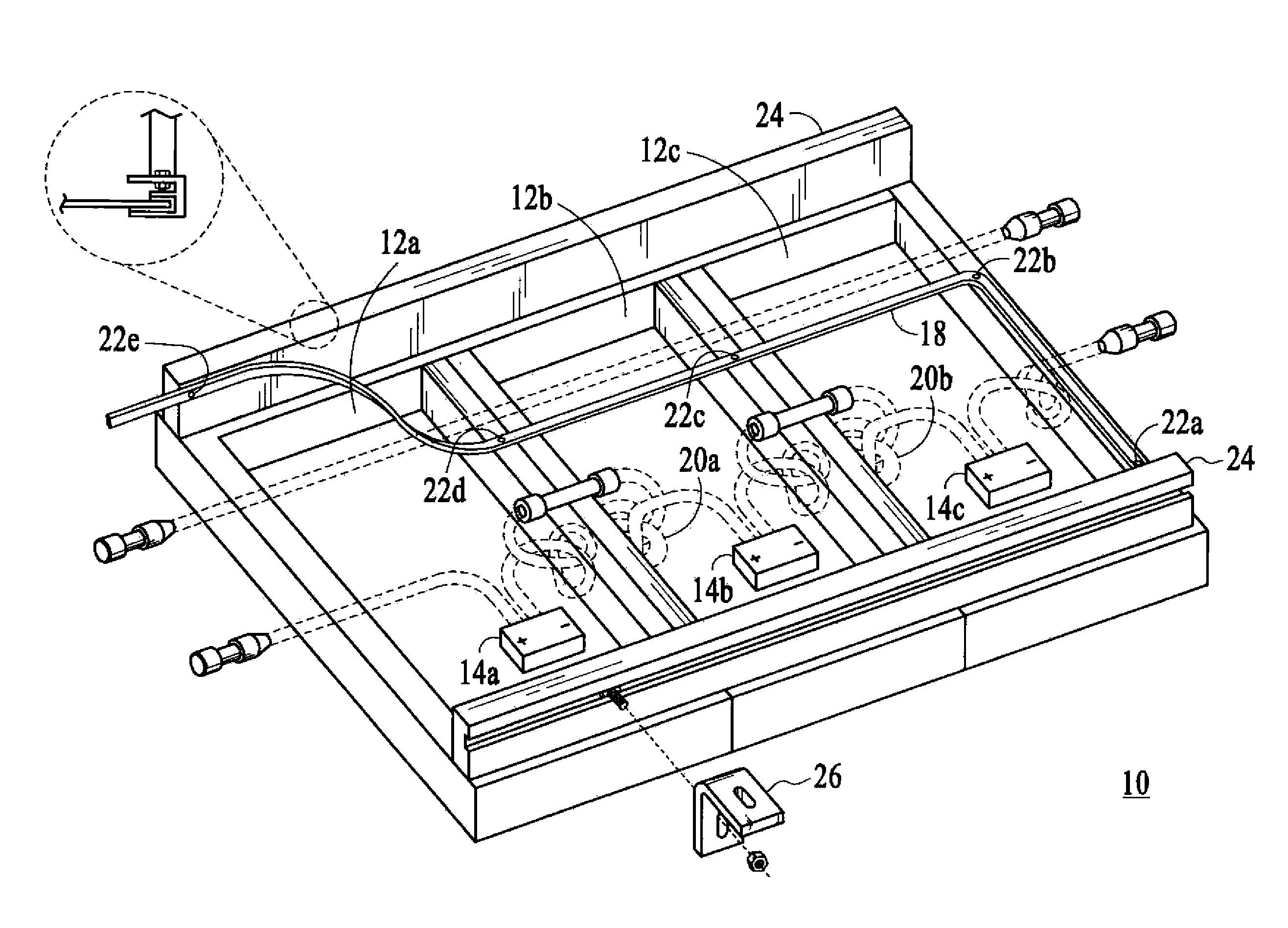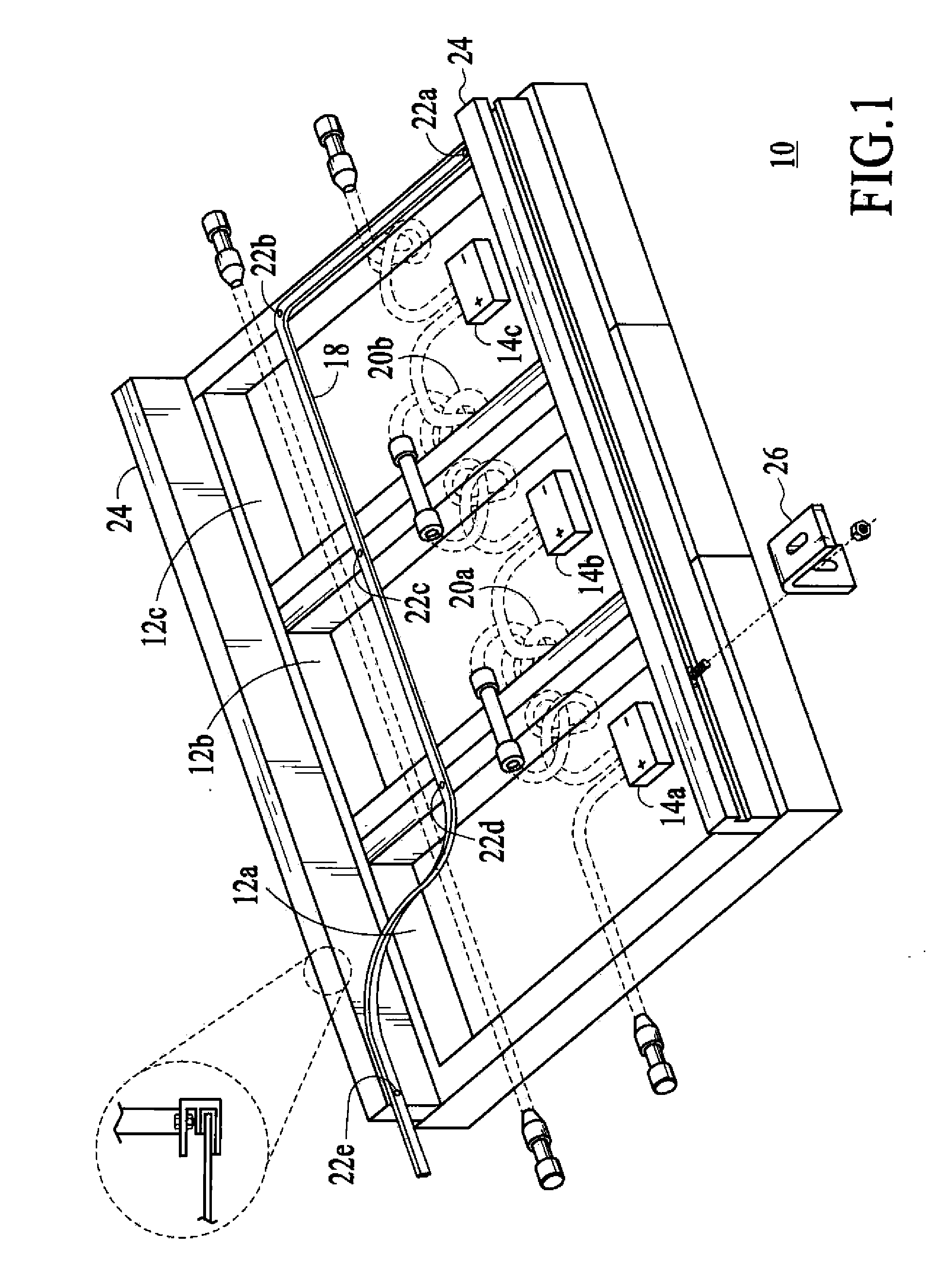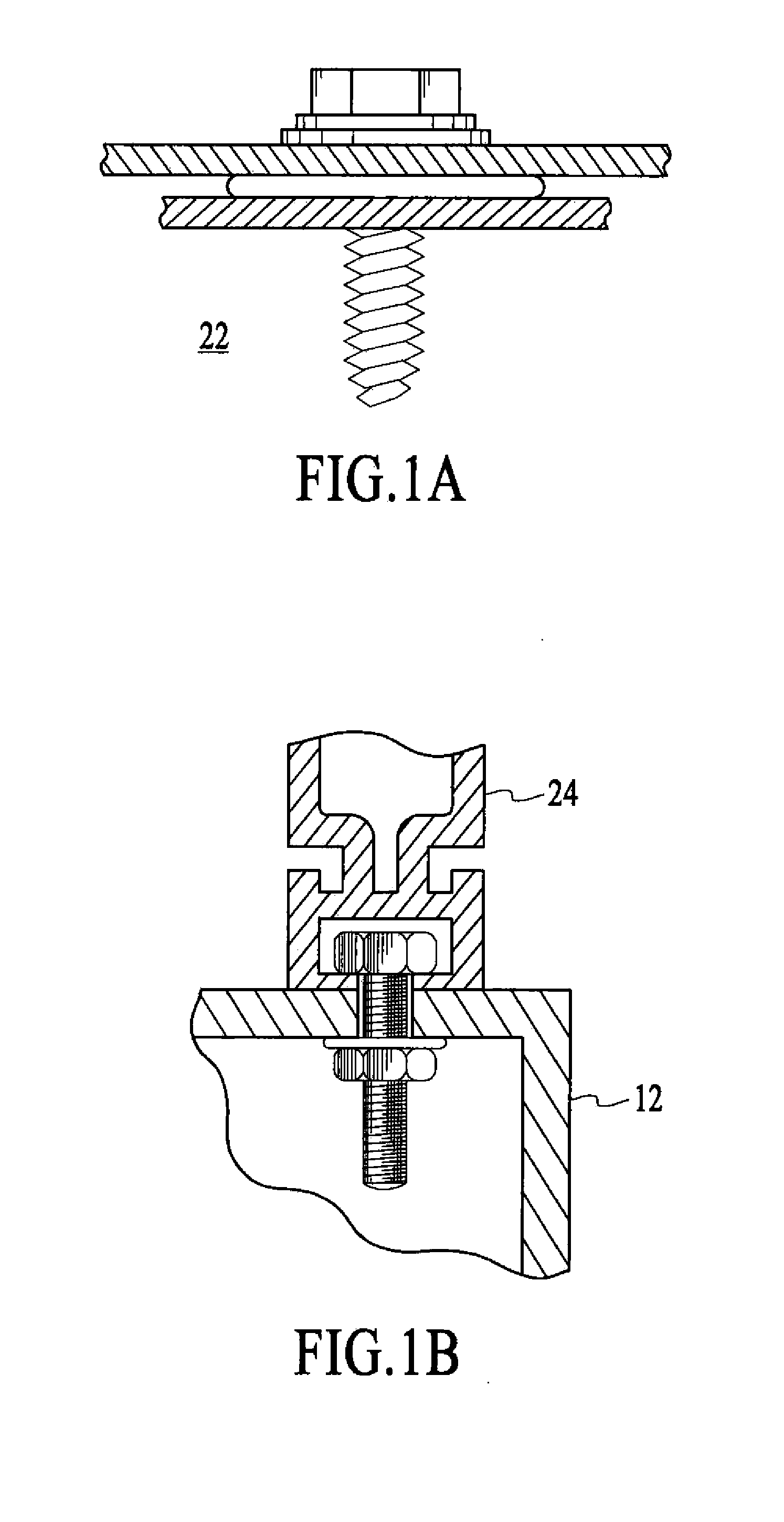Mounting system for solar panels
a solar panel and mounting system technology, applied in the field of solar panels, can solve problems such as installation errors, and achieve the effects of simplifying the final connection of external wiring, removing or changing defective modules, and simplifying the electrical assembly of modules
- Summary
- Abstract
- Description
- Claims
- Application Information
AI Technical Summary
Benefits of technology
Problems solved by technology
Method used
Image
Examples
first embodiment
[0055]FIG. 2B is a conventional combiner junction box 121′. As is seen, the conventional junction box 121′ would have to be adapted to the solar module based upon the wiring 165. This would add considerable time and cost when installing the box 121′.
[0056]A custom combiner junction box 121″ is shown in FIG. 2C. The custom combiner junction box 121″ has several advantages over the conventional combiner junction box 121. Referring back to FIG. 2A, firstly, as is seen the connections for wiring segments 108 can be coupled directly into the connections 175 of the junction box 103′. FIG. 2D illustrates the combiner junction box 121″ coupled between two solar panels. Furthermore the custom combiner junction box 121″ is directly coupled to the outside of the solar panel and permanently fastens to the side of the panel with a bolt. The bolt also provides a grounding path to a system ground conductor.
[0057]Accordingly, the solar panel 100 requires significantly fewer parts to assemble and is...
second embodiment
[0063]FIG. 3B illustrates a threaded splice 300 that includes double screw lock 302. In this embodiment, a screw lock 302 drives the solar modules together. The screw lock 302 provides structural rigidity and also provides electrical grounding between modules. In this embodiment, the left and right hand thread 308a, 308b allow for a variety of distances between modules. The spacing between modules is dictated by the center left and right hand thread 308a and 308b. The splice 300 is coupled to the solar module using a custom wrench. The use of such wrench will be described in detail hereinafter.
[0064]FIG. 3C illustrates an embodiment of a slide cam lock for a splice. The slide cam lock 350 ensures alignment of modules through extrusion using the locking mechanism 352a and 352b. The blocks move into position to secure the splice.
third embodiment
[0065]FIG. 3D illustrates a splice 104. The splice 104 is tapered to allow for easy initial assembly line up and a final tight fit between the modules 102A and 102B. In a preferred embodiment it is precisely located in the panel 100 in a centerline fashion. In a preferred embodiment the splice 104 is a tapered conductive metal to provide a grounding path between modules, and includes a sharp edge to improve grounding to each module. The splice 104 is also grooved for easy screw insertion from the top or the side of the module 102. The splice 104 precisely aligns the modules 102 and allows the assembler to compress the connector sockets 108, thereby completing an electrical connection between the two adjacent modules. The electrical connection between the two adjacent modules by the splice 304 eliminates the need to run a grounding wire between each module. As is seen only one other grounding wire is required for an entire panel assembly as long as all solar modules are connected wit...
PUM
| Property | Measurement | Unit |
|---|---|---|
| rigidity | aaaaa | aaaaa |
| length | aaaaa | aaaaa |
| shape | aaaaa | aaaaa |
Abstract
Description
Claims
Application Information
 Login to View More
Login to View More - R&D
- Intellectual Property
- Life Sciences
- Materials
- Tech Scout
- Unparalleled Data Quality
- Higher Quality Content
- 60% Fewer Hallucinations
Browse by: Latest US Patents, China's latest patents, Technical Efficacy Thesaurus, Application Domain, Technology Topic, Popular Technical Reports.
© 2025 PatSnap. All rights reserved.Legal|Privacy policy|Modern Slavery Act Transparency Statement|Sitemap|About US| Contact US: help@patsnap.com



